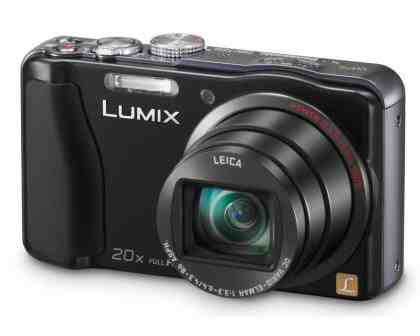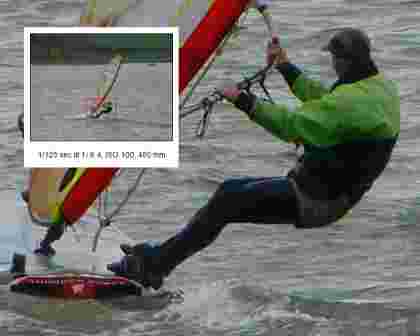Panasonic invented the pocket-sized ultra-zoom camera with its TZ series, but last year's Panasonic Lumix DMC-TZ20 was outgunned by rival cameras offering bigger zooms and better image quality, especially in low light. This year's TZ30 appears on the surface to be barely any different to the TZ20, but in fact it's a much better camera.

The most obvious change is a bigger zoom range. It still starts at a wide-angle 24mm (equivalent) focal length but now stretches to 480mm – a 25 per cent improvement on the TZ20. A few pocket-sized cameras go even further – the Olympus SZ31MR and SZ-12 currently hold the record with their 24x (25-600mm) zooms – but by any normal measure this is a huge zoom for such a slim camera.
Panasonic's Leica-branded lenses tend to produce extremely sharp images, and this one is no different. Whereas the Canon PowerShot SX260 HS 's focus trailed off a little at the long end of the zoom, the TZ30 was razor sharp throughout the zoom range and right into the corners of frames, with barely any chromatic aberrations. The camera applies heavy digital sharpening to make the details pop, but it's used to accentuate the lens's sharpness rather than to make up for a lack of it.

Focus is extremely sharp for telephoto photography, too – there's a small hint of chromatic aberrations on the windsurfer's legs but the writing on the board is legible. There's some noise on the yellow sleeves, though, despite the ISO 100 sensitivity - click to enlarge
Panasonic had a change of tack last year by moving from 14-megapixel to 12-megapixel sensors in its bulkier ultra-zoom FZ cameras. The accompanying improvement to noise levels and image quality in general was enormous. As such, it's disappointing that Panasonic has stuck with a 14-megapixel sensor for the TZ30. In fact, it's a 15-megapixel sensor, of which a slightly cropped 14-megapixel area is used to capture the image. It's an updated sensor to the one in the TZ20, though, and noise levels are much improved. Low-light shots at ISO 1600 were a little grainy and smudged, and exhibited yellow blotches here and there, but they were a vast improvement on the grimy messes produced by the TZ20. Brightly lit shots were much cleaner too. There was still a little noise in shadier parts of the image but much less than before. This improvement is clearly welcome, but it's more important how the TZ30 compares with its rivals. Here, its image quality in low light was above average but not up to the standard of the Canon SX260 HS.

Image quality in low light could be better, but it's fine for small prints or when resized to fit a screen - click to enlarge
Most GPS-enabled cameras offer a choice of having the GPS radio on all the time (which drains the battery) or only on when the camera is on (which means that a lot of shots aren't correctly tagged). The TZ30 manages the GPS radio's power automatically to deliver the best of both worlds. It also managed to calculate its position when used indoors – something few other GPS cameras we've tested can do. Photos can be viewed on a map directly in the camera, although this requires 6.3GB of map data to be copied from the supplied DVD to an SDHC card. You can choose to copy only the regions you need, but Western Europe still weighs in at 2.5GB. It isn't the most attractive map, either, and switching between map and photo views is a little clunky. Still, this is one of the best implementations of GPS we've seen on a digital camera.
